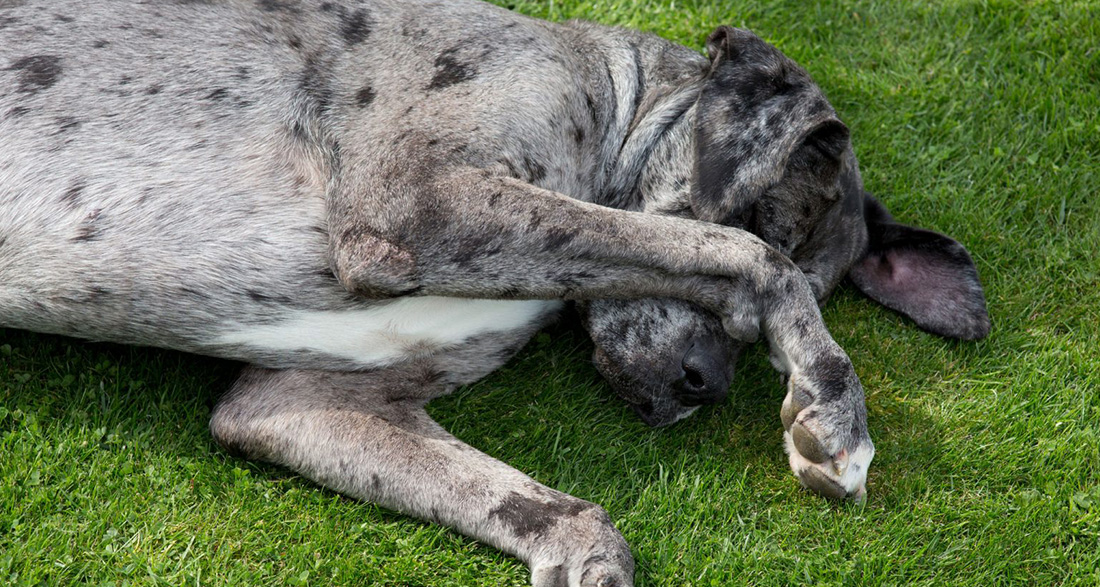Who is this trick for?
The “Shame on You!” trick is generally suitable for any dog. However, joint or bone problems should be ruled out in advance. In this trick, your dog is supposed to place the front paw over its nose and hold it there for a few moments. Therefore, the trick is not suitable for dogs that are led by a Halti or frequently wear a muzzle because, with both aids, we don’t want the dog to touch its nose with its paw.
How do I teach my dog “Shame on You!”?
For this exercise, it is useful to use a clicker or a marker signal as a training tool so that you can precisely reinforce the desired behavior. Additionally, you will need something for motivation and positive reinforcement, such as small treats. Create a calm training atmosphere to help your dog concentrate better and avoid distractions. No other tools are necessary for this trick, as we want to explain a variant that avoids common manipulations (hair tie, post-it, etc.). It is very helpful if your dog already knows the “give paw” signal. This way, you can provide assistance to your dog at the beginning.
Step 1
If your dog doesn’t know “give paw” yet, start with this trick. Let your four-legged friend sit in front of you. Hold a small treat firmly in one hand so that he can smell it but not see or reach it. Hold your hand close to your dog’s nose on one side so that he can easily turn his head. This way, he won’t have his weight on the paw he should give. Encourage your dog to get the treat—most dogs will try to open your hand with their paw.
Once your dog puts his paw on your hand, mark/click the desired behavior. You can now prepare for the actual trick by rewarding your dog under his paw after the click/marker signal. Repeat this step several times. After four to five repetitions, leave the motivational item in your hand behind and reinforce only with the treat after the click/marker.
Step 2
In the next step, gradually delay the click. Your dog will quickly attempt to position his head below his paw due to the chosen reward point. Now promptly reinforce the desired behavior with the clicker/marker and give the treat below the paw. Soon, your dog will reliably show the desired behavior. Repeat this step several times.
Step 3
Once your dog reliably demonstrates the behavior, you can gradually phase out your hand that previously served as assistance. Hold your hand in front of your dog so that he lifts his paw. However, before he puts the paw down, lure your dog’s nose under the front paw with a treat. The opposite hand is suitable for this. Now, mark this behavior and reward your dog with the treat/cookie. Repeat this behavior several times. Then, leave the motivational item in your hand. If your dog continues to show the desired behavior, you are ready to introduce the signal.
Step 4
Introduce the new signal, such as “Shame on You,” 0.5 seconds before the action trigger. Your extended hand has probably become your action trigger. However, for perfect signal introduction, identify the true action trigger, as it can also be another movement on your part that produces the desired behavior.
Tip:
Don’t forget how strenuous this training is for your dog during enthusiastic “Shame on You!” practice. Therefore, it’s better to train in short sessions and include enough breaks.


